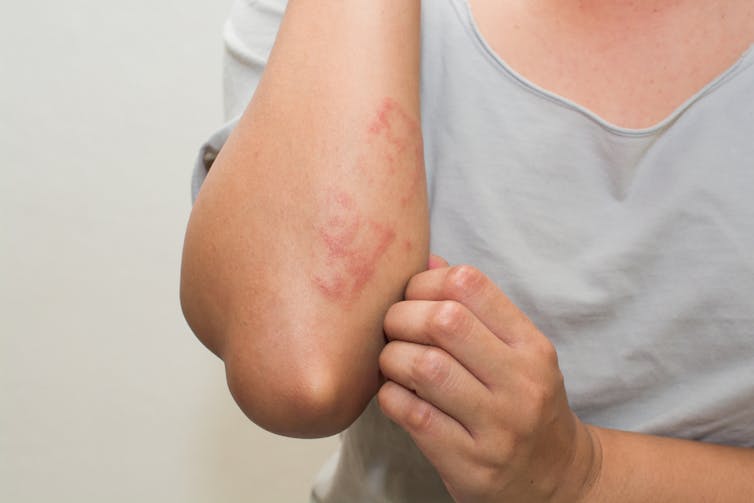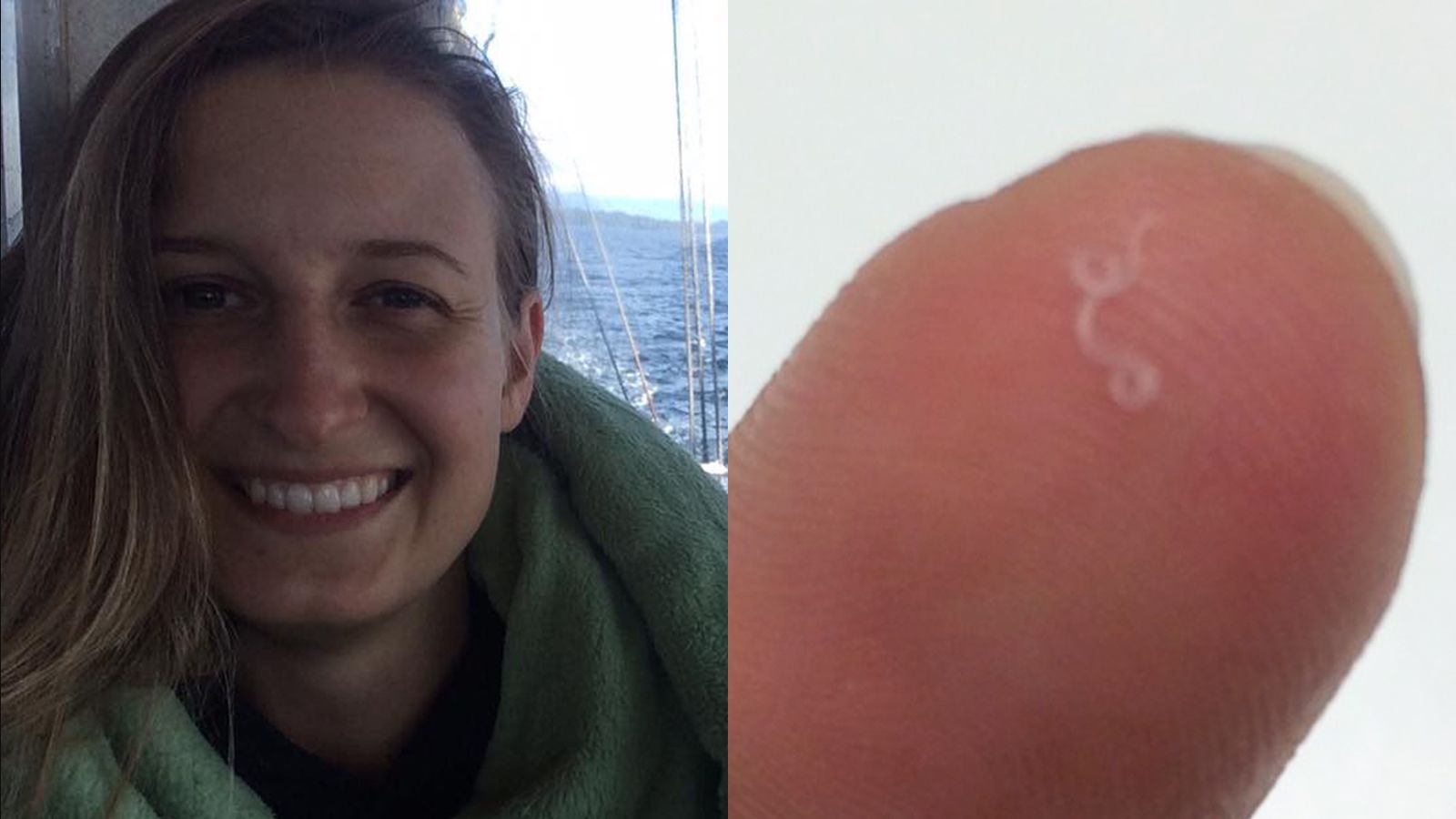Ringworm on a cat appears as red, circular patches with scaly edges. These lesions often cause hair loss and can be itchy for the cat.
Known as dermatophytosis, ringworm is a contagious fungal infection that can spread to humans and other animals. Spotting the characteristic ring-like appearance on your cat’s skin is crucial in identifying ringworm and seeking appropriate treatment to prevent its further spread.
It is important to consult a veterinarian for an accurate diagnosis and advice on the best course of action to effectively treat the infection. Early detection and treatment can help minimize discomfort for your cat and reduce the risk of transmission to other pets or family members.
Understanding The Visual Signs
Ringworm on cats is characterized by crusty circular lesions that are most commonly found on the head, ears, and paws. These lesions may cause hair loss and reddened skin in affected areas. Another visual sign of ringworm in cats is the presence of scaly patches with broken hairs.
It’s essential to be able to recognize these visual cues to effectively identify and treat ringworm in cats. Regularly monitoring your cat’s skin and fur can help detect any signs of ringworm early on and prevent its spread. If you notice any of these visual signs, it’s crucial to consult with a veterinarian who can provide proper diagnosis and treatment options for your furry friend.
Maintaining good hygiene and cleanliness in your cat’s environment will also help prevent the spread of ringworm.
Uncommon But Possible Symptoms
Ringworm on a cat may display uncommon but possible symptoms. Itching and scratching are common signs. The cat’s skin may become swollen or inflamed. Lesions can spread to other parts of the body if left untreated.
Identifying And Diagnosing Ringworm
Ringworm on a cat can be identified and diagnosed through a clinical examination by a veterinarian. The Wood’s Lamp Test is often used to check for fluorescence, indicating the presence of ringworm. This test involves using an ultraviolet light to examine the cat’s skin.
Another diagnostic method is collecting a fungal culture sample for laboratory testing. The veterinarian will take a small sample from the cat’s skin or hair and send it to a lab to determine if ringworm is present. These diagnostic procedures are important for accurate identification and treatment of ringworm in cats.
It is always recommended to consult with a veterinarian if you suspect your cat may have ringworm, as they can provide the appropriate care and treatment for your furry friend.

Credit: www.rmtedu.com
Cat Breeds Prone To Ringworm
Ringworm on a cat can have various appearances, depending on the breed. Some cat breeds, particularly hairless ones like Persians and Himalayans, are more prone to ringworm than others. Additionally, breeds such as Devon Rex and Cornish Rex may also be susceptible to ringworm infections.
It’s important to note that ringworm is not actually a worm, but a fungal infection that can cause circular patches of hair loss, redness, and scaly skin on cats. If you suspect your cat may have ringworm, it’s best to consult a veterinarian for a proper diagnosis and treatment plan.
Regular grooming, maintaining a clean environment, and minimizing contact with infected animals can help prevent the spread of ringworm among cats. Take proactive steps to keep your feline friend healthy and ringworm-free.
Prevention And Treatment
Ringworm on a cat is a common fungal infection that can cause various skin problems. Prevention is crucial to keep your feline friend safe and healthy. Isolating infected cats from other pets can minimize the spread of the infection. Regularly cleaning and disinfecting living areas can also help remove any lingering spores.
For mild cases, topical medications can be applied to the affected areas to target the fungus directly. In more severe cases, oral antifungal medications may be necessary to combat the infection. Remember to consult a veterinarian for an accurate diagnosis and appropriate treatment plan for your cat’s specific condition.
By being proactive and taking preventive measures, you can reduce the risk of ringworm and keep your cat happy and ringworm-free.
Holistic Remedies And Natural Treatments
Ringworm can cause visible changes on a cat’s skin, such as circular bald patches and redness. To treat this condition holistically, consider using natural remedies. An apple cider vinegar rinse can help to kill the fungus causing the ringworm. Apply coconut oil to the affected areas to soothe the skin and promote healing.
In addition, providing herbal supplements can boost the cat’s immune system, aiding in the fight against ringworm. These treatments can be effective and gentle on the cat’s skin, providing relief without harsh chemicals or medications. By taking a holistic approach, you can help your cat recover from ringworm and maintain their overall well-being.
Frequently Asked Questions For What Does Ringworm Look Like On A Cat
What Are The Symptoms Of Ringworm In Cats?
Ringworm in cats can cause circular patches of hair loss, scaly skin, and redness. Other symptoms include itching, crusting, and flaking of the skin.
How Is Ringworm Transmitted To Cats?
Ringworm can be transmitted to cats through direct contact with an infected cat or contamination from objects such as bedding, grooming tools, or furniture.
Can Humans Get Ringworm From Cats?
Yes, humans can get ringworm from cats. The infection can be transmitted through direct contact with an infected cat or by coming into contact with objects contaminated with the fungus.
How Is Ringworm Diagnosed In Cats?
Ringworm in cats can be diagnosed through a combination of physical examination, Wood’s lamp examination, fungal culture, and microscopic examination of hair samples.
Conclusion
Recognizing the signs of ringworm on a cat is crucial for early detection and prompt treatment. By closely observing your furry friend for any irregularities in their skin and coat, such as red, circular lesions or patchy hair loss, you can take necessary steps to address the issue.
Remember to consult a veterinarian for an accurate diagnosis and appropriate treatment plan tailored to your cat’s specific needs. Alongside medical intervention, implementing good hygiene practices and keeping your cat’s living space clean can help prevent the spread of ringworm among other pets and humans in the household.
With timely intervention and diligent care, your cat can be on the road to recovery from ringworm, enjoying a healthy and happy life once again.



